
William Walker was an American physician, lawyer, journalist, and mercenary who organized several private military expeditions into Mexico and Central America with the intention of establishing English-speaking colonies under his personal control, an enterprise then known as "filibustering". Walker usurped the presidency of Nicaragua in July 1856 and ruled until May 1, 1857, when he was forced out of the presidency and the country by a coalition of Central American armies. He returned in an attempt to re-establish his control of the region and was captured and executed by the government of Honduras in 1860.

The Sesiidae or clearwing moths are a diurnal moth family in the order Lepidoptera known for their Batesian mimicry in both appearance and behaviour of various Hymenoptera.

The surilis are a group of Old World monkeys and make up the entirety of the genus Presbytis. They live in the Thai-Malay Peninsula, on Sumatra, Borneo, Java and smaller nearby islands. Besides surili, the common names for the monkeys in the genus also sometimes use the terms "langur" or "leaf monkey."

The Hepialidae are a family of insects in the lepidopteran order. Moths of this family are often referred to as swift moths or ghost moths.
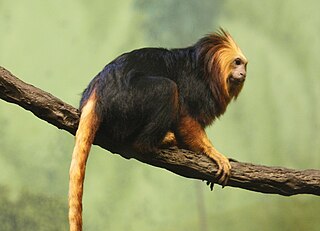
The golden-headed lion tamarin, also the golden-headed tamarin, is a lion tamarin endemic to Brazil. It is found only in the lowland and premontane tropical forest fragments in the state of Bahia, and therefore is considered to be an endangered species. It lives at heights of 3–10 metres (9.8–32.8 ft). Its preferred habitat is within mature forest, but with habitat destruction this is not always the case. Several sources seem to have different information on the number of individuals within a group, and the type of social system that may be apparent. The golden-headed lion tamarin lives within group sizes ranging from 2 to 11 individuals, with the average size ranging from 4 to 7. According to various sources, the group may consist of two adult males, one adult female, and any immature individuals, one male and one female and any immature individuals, or there may be one producing pair and a varying number of other group members, usually offspring from previous generations. There is not much known on its mating system, but according to different sources, and information on the possible social groups, it can be assumed that some may practice monogamous mating systems, and some may practice polyandrous mating systems. Both males and females invest energy in caring for the young, and all members of the group also help with juvenile care.
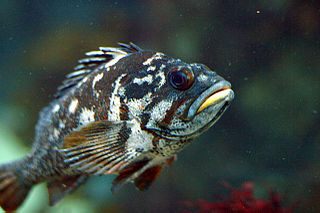
The gopher rockfish, also known as the gopher sea perch, is a rockfish of the Pacific coast, primarily off California.
The Nicaraguan woodrat is a species of rodent in the family Cricetidae found in Honduras and Nicaragua.

The Sarawak surili is a species of primate in the family Cercopithecidae. It is endemic to the southeast Asian island of Borneo, where it is distributed north of the Kapuas River in Kalimantan, Indonesia, the Malaysia states of Sarawak and Sabah, and in Brunei. Its taxonomy is complex and disputed, and it has been considered a subspecies of P. femoralis or P. melalophos. The Sarawak surili was formerly considered common, but has declined drastically due to persecution and habitat loss, and as of 2008 is only known from five sites with a combined population of 200–500 individuals. Consequently, it is believed to be one of the rarest primates in the world, and has been rated as critically endangered by IUCN.

Ormetica is a genus of moths in the family Erebidae.
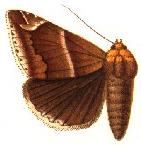
Buzara is a genus of moths in the family Erebidae.
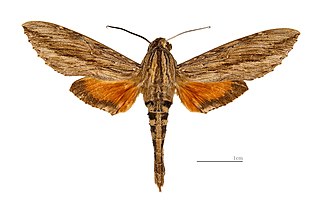
Dilophonotini is a tribe of moths of the family Sphingidae described by Hermann Burmeister in 1878.
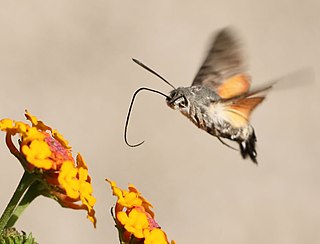
Macroglossini is a tribe of moths of the family Sphingidae described by Thaddeus William Harris in 1839.

Pyrgotis is a genus of moths belonging to the subfamily Tortricinae of the family Tortricidae. This genus was first described by Edward Meyrick in 1881.
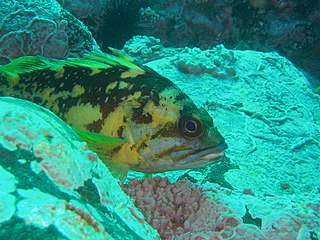
Sebastes chrysomelas, commonly known as the black-and-yellow rockfish, is a marine fish species of the family Sebastidae. It is found in rocky areas in the Pacific off California and Baja California. Although it is similar in appearance to the China rockfish, it lacks the China's long yellow streak. Its distribution is also more to the south than the China.
In the 10th edition of Systema Naturae, Carl Linnaeus classified the arthropods, including insects, arachnids and crustaceans, among his class "Insecta". Insects with hardened wing covers were brought together under the name Coleoptera.

Chrysomela populi is a species of broad-shouldered leaf beetles belonging to the family Chrysomelidae, subfamily Chrysomelinae.

Chrysomela is a genus of leaf beetles found almost throughout the world, but not in Australia. It contains around 40 species, including 7 in eastern and northern Europe. It also includes at least 17 species in North America, including the cottonwood leaf beetle Chrysomela scripta.
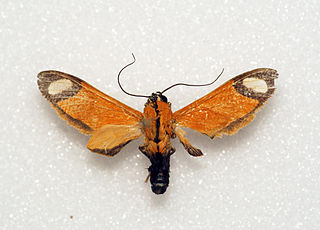
Ormetica contraria is a moth of the family Erebidae. It was described by Francis Walker in 1854. It is found in French Guiana, Guyana, Brazil, Ecuador, Peru and Bolivia.
Ormetica zenzeroides is a moth of the family Erebidae. It was described by Arthur Gardiner Butler in 1877. It is found in French Guiana, Brazil, Ecuador, Bolivia and Panama.

Lamprolina is an Australian genus of leaf beetles (Chrysomelidae) found in Victoria, New South Wales, and Queensland.















